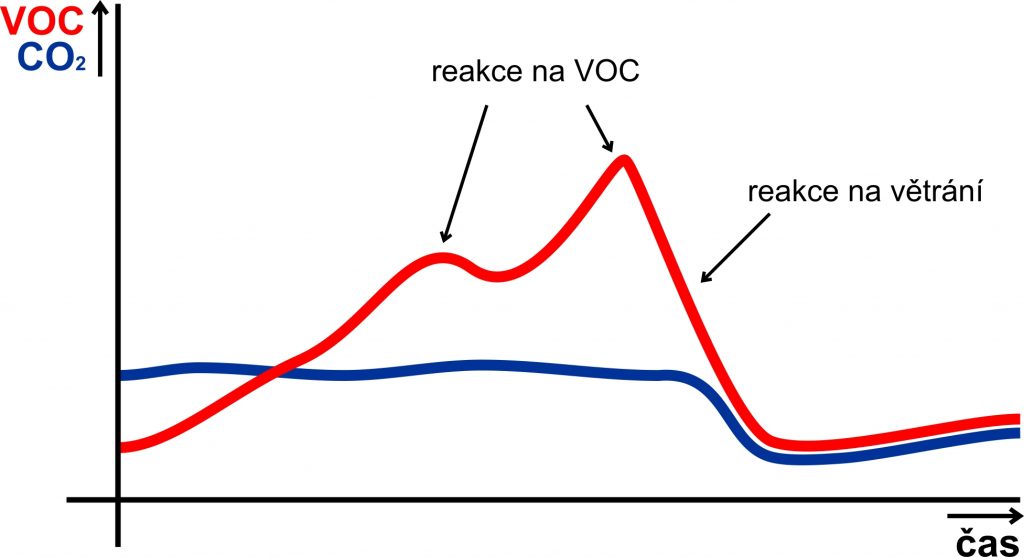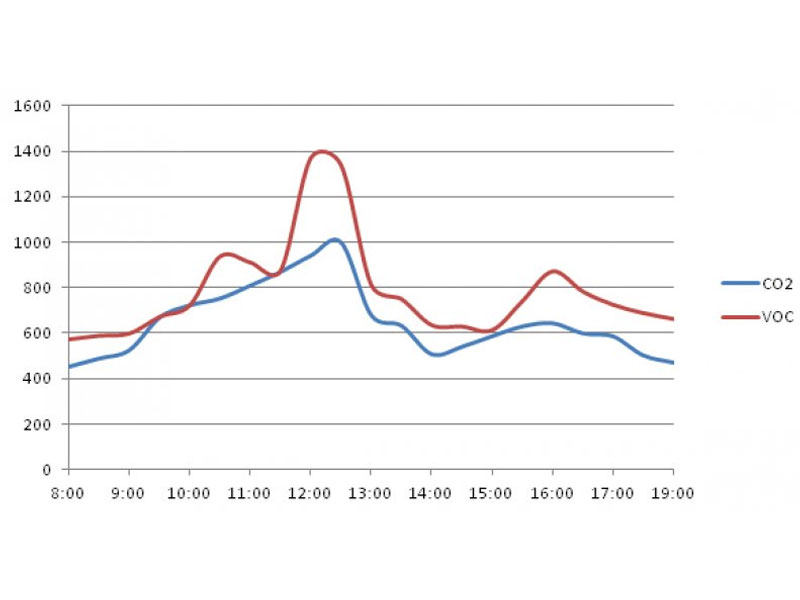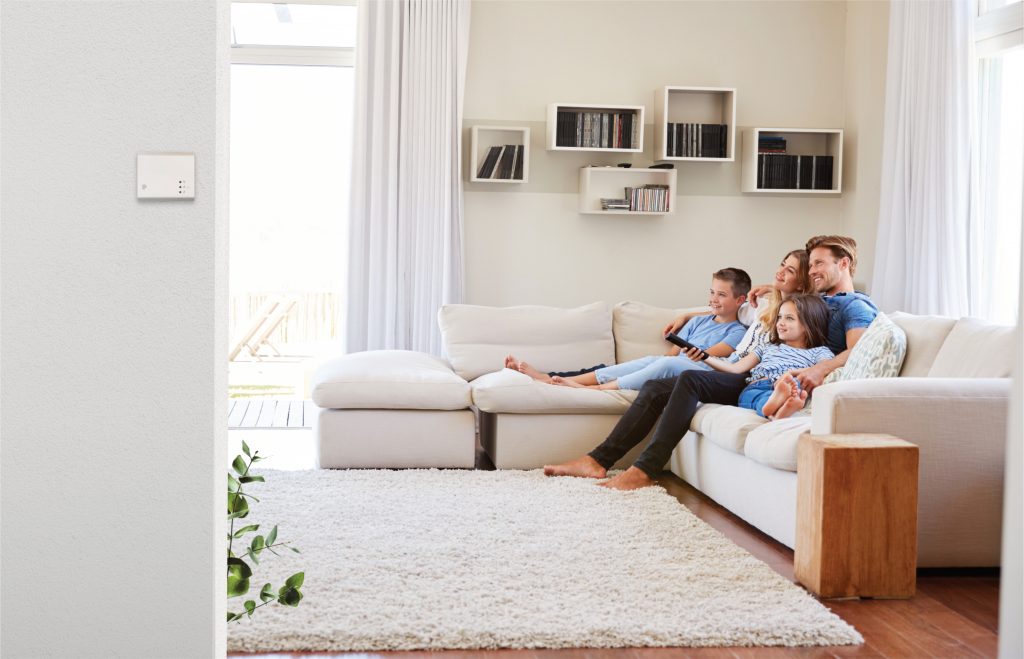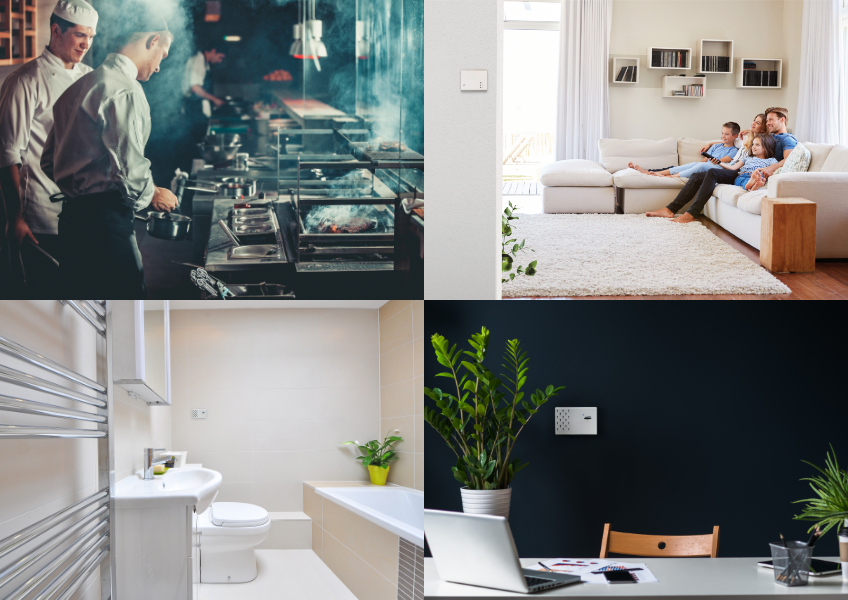Measuring CO2 is often not enough
Nowadays, indoor air quality is assessed by temperature, humidity and, most importantly, carbon dioxide (CO2) concentration. However, people often complain about the air quality even though all these indicators are at an optimal level. This is because people’s comfort in the indoor environment is reduced not only by high CO2 concentrations, for example, but also by various odours, fumes, etc. Most of these substances that we perceive by smell (even those that we are unable to distinguish) fall into the group of so-called volatile organic compounds.
VOC – volatile organic compounds
Volatile organic compounds, or VOCs, are chemicals that are released as gases from solids or liquids and evaporate easily into the air at room temperature. The concentration of these substances can be up to 100 times higher indoors than outdoors.
Many of the products we use or are exposed to every day release VOCs into the air. These can include various cleaning products, fumes from frying and cooking, perfumes, paint and furniture fumes, etc. While all VOCs have the potential to be harmful, there are a few VOCs that can be particularly dangerous and yet are emitted from many products in our homes – formaldehyde, benzene and phenol, for example. Even slightly elevated levels of airborne chemicals can cause health problems for people, especially young children, the elderly, pregnant women, and those who suffer from allergies and asthma.
CO2 vs. VOC measurement

Ventilation by carbon dioxide concentration plays an important role in the control of modern ventilation systems. This gas, as already mentioned, is not the only (or even the most harmful) substance in the indoor environment. Oxygen dioxide itself
carbon dioxide is not dangerous to humans in small concentrations, but it is very easy to measure and its concentration rises comparably to that of other substances when people pollute a room – it has therefore been chosen as a reliable indicator for assessing air quality.
Real measurements show that an increased concentration of pollutants in the air does not necessarily mean an increased concentration of CO2 and yet the air contains many harmful substances. Logically, then, it should
the ventilation system should also react to this situation and not only to the CO2 concentration.
Indoor air quality monitoring sensors
More and more recently, “air quality sensors”, which are commonly referred to as VOC sensors, have been used to measure air quality beyond CO2. These sensors are said to measure close to human perception of odours. In addition, the sensors also detect substances that humans cannot detect by smell.
The wide range of detectable gases allows different concentrations of gases to be monitored, simplifying air quality monitoring. Detected concentrations range from units of ppm to thousands of ppm. These features make these sensors suitable for use in low-maintenance areas such as homes, common areas, schools, gymnasiums, etc.
|
CO2 |
VOC |
|
| Schools |
x |
|
| Public areas |
x |
|
| Offices |
x |
|
| Residential areas |
x |
x |
| Changing rooms |
x |
|
| Canteens |
x |
|
| Kitchens |
x |
|
| Gyms, fitness centres |
x |





